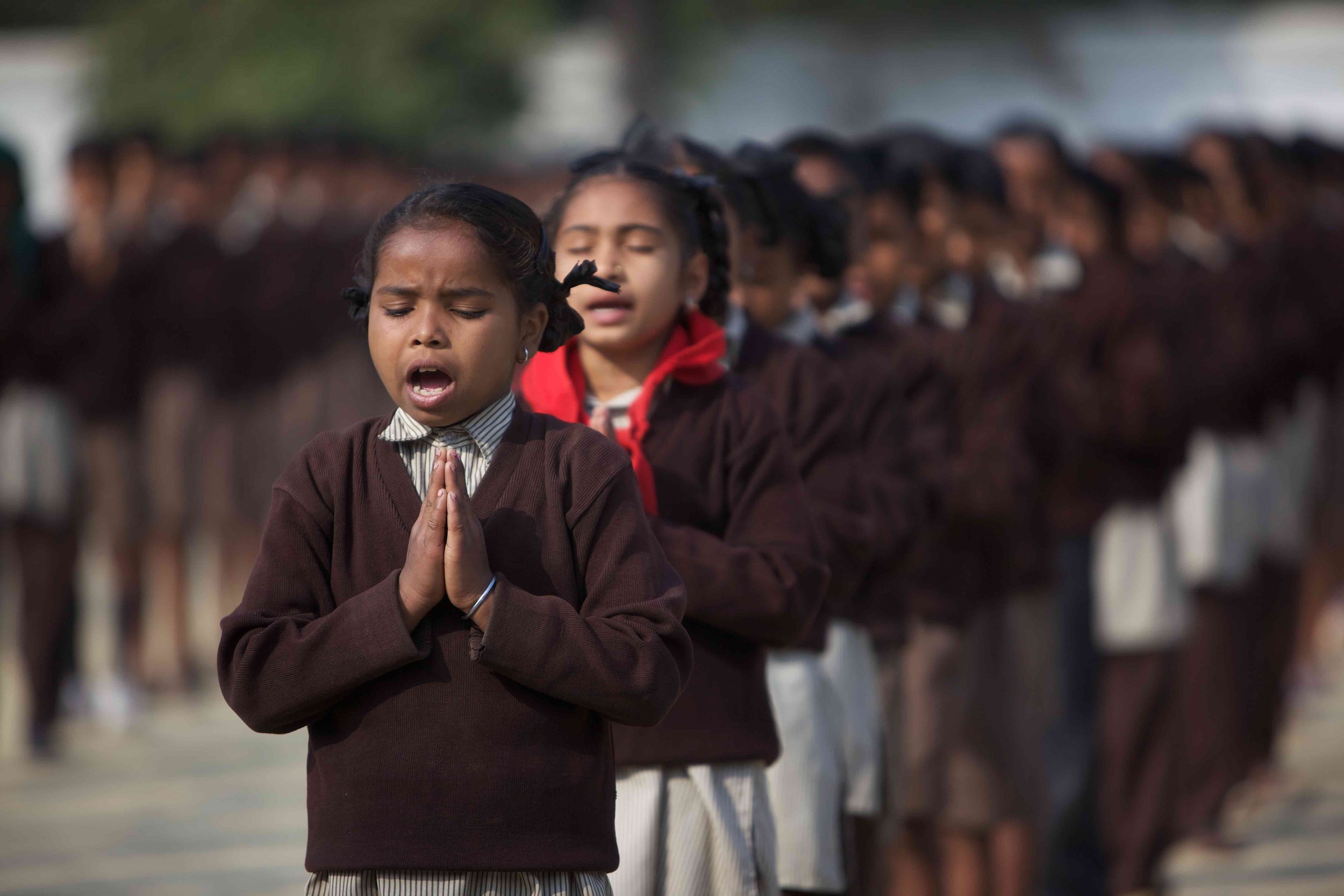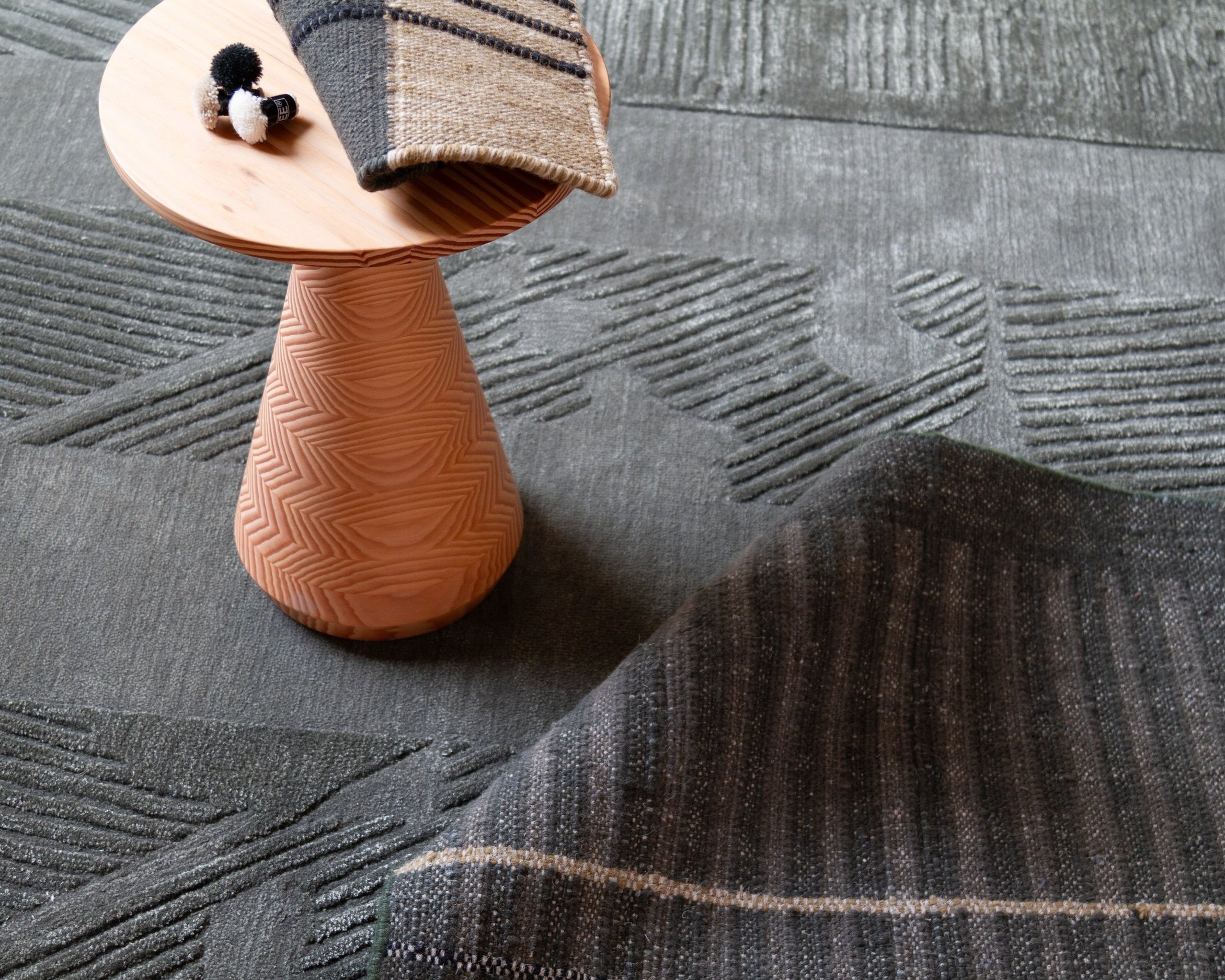Sustainability
Our Mission
To identify and mitigate the social and environmental impacts of our rugs whilst demonstrating our commitment to the carpet belt of India through our involvement with Project Mala. Our rugs are ethically created and our sustainability mission focuses on how the journey of a rug impacts both people and the environment.
Our Design Ethos
We take a holistic view of sustainability weighing equally the social and environmental impacts of our business. Our stance is not static. We are on a continually evolving journey with space to grow, learn, and improve.
People
Our rug business gives back to the manufacturing community in the form of children’s education. The reason we prioritise children’s education is because the rural area where our rugs are made still lacks the infrastructure for high quality education. Children historically worked in fields and assisted their families in industry.
We want our customers to know where their rugs come from and understand how they are made and who makes them. The artisans turn our vision into a textile. It is important to us that every person that works with us in design, production, logistics and installation experiences a safe, fair and equal working environment. We are working towards the collective good for all involved in our business.
Children’s EducationProject Mala
Project Mala is a UK based charity that operates 6 schools in the carpet belt of India, currently educating 1600 children in rural carpet communities. They prioritize the brightest children from the poorest families giving the preference to girls, orphans and children with disabilities. The donations provide education, meals, immunizations, uniforms, backpacks and school supplies to the children.
Totzke Rugs donates 10% of profits from all rugs back to India via Project Mala.
10,000+
children have attended school rather than working in fields with donations to Project Mala since 1990.



Ethical Treatment of Workers We want our customers to know where their rugs come from and understand how they are made and who makes them. The artisan turns our vision into a textile.
SA8000 is the leading social certification globally. It provides a holistic framework for fair treatment of workers. The 8 key areas addressed by this comprehensive standard are:
Child Labor, forced labor, health and safety, freedom of association and right to collective bargaining, discrimination, disciplinary practices, working hours and remuneration.
Inclusion and diversity InitiativesWomen’s Weaving Centre
Weaving is traditionally a male-dominated profession and the villages have reservations about sending women to work outside the home. Our manufacturing partner is training women to become self-reliant and encouraging them to finish the program. The women are also paid a daily stipend for the entire training duration.
AdvocacyWe look to use our collaborations to share new perspectives, working with inspiring designers and activists who use their voice for good.
Environment
Our goal is to design rugs that reduce our impact. Currently, we are evaluating the sourcing of raw materials in our rugs and working on collections with lower impact. We will share our findings and communicate our improvements.
Our manufacturing partner provides robust environmental management, and we are proud to work with them. The factory runs on renewable energy and uses its own facilities to treat the dye house, the most environmentally impactful part of textile manufacturing.
Sourcing of Raw Materials
Responsible Wool
Wool is the primary raw material in our rugs. Responsible wool sourcing focuses on the welfare of sheep and the land they graze on. We use a variety of wools; from New Zealand wool in our finest threads to Indian wool in flat woven rugs.
Natural Jute
Jute is a renewable resource that can be grown without the need for fertilizers and pesticides, making it a more sustainable alternative to synthetic fabrics. Jute fabric also has a low carbon footprint, as its production requires less energy and resources than synthetic fibers.
Recycled Cotton
Recycled cotton is made of recycled raw material and re-manufactured components. Textile recycling is generated from both pre-consumer and post-consumer materials, with the largest volume coming from pre-consumer waste such as cutting scraps.
Viscose
Stronger than silk, viscose is used as a secondary fibre in some of our high lustre rugs providing a silk like shine. There is however a negative. Viscose comes from wood pulp of fast growing re-generative trees. Viscose manufacturing is chemically intensive and currently an unregulated process.
Manufacturing and Design Initiatives
Renewable Energy
The production factory hit a milestone in 2023 of using 83% renewable energy. Approximately 30% can come from solar power, and the bulk of energy comes from bio fuels derived from rice husks cultivated in the local fields. In the weaving houses, the only energy required is the electricity needed to turn the lights on and operate a hand tufting machine.
Water Treatment
Dyeing is the most environmentally impactful stage of rug production. Water has to be heated to very high temperatures to dye the yarn and then cooled back down to be treated. The dye house water is treated on site and re-used to irrigate the field behind the factory contributing to water efficiency and sustainable water management.
Design
We are currently in the process of evaluating our designs and the impact of each in its current construction. We will share our findings and any changes that we make as a result.
Use
Every consumer plays a part in the sustainability story of their rug by keeping the item in use for longer. This is accomplished through care and maintenance.
How to help your rugs age gracefully >
Our rugs will contribute to your sustainability certifications by contributing to indoor air quality with Greenlabel+ certification.
Journey of a Rug
How the life cycle of our rugs impacts people and environment.
1. Sourcing of Raw Materials
The journey of a rug starts with the sourcing and sustainable harvesting of wool. Our flat woven rugs use predominantly Indian wool and our hand tufted rugs are made with New Zealand wool. We also introduce recycled cotton into our backing.
2. Dyeing
The most environmentally impactful stage of rug production, energy is required to heat the dye bath and then to cool it back down afterwards. To mitigate this, the factory treats the dye house water and uses the treated water to irrigate local fields. This contributes to water efficiency and sustainable water management.
3. Weaving
The yarns move from the main factory to the weaving house. Weaving is a cottage industry with artisans working from small weaving houses across the carpet belt of India. Environmentally, this is low impact. The only energy required is the electricity to operate the tufting machine. Socially it’s a very high impact stage. The skill of the artisan brings our design to life.
4. Finishing
Rugs are returned to the central factory for washing, carving and binding. At this stage recycled materials are introduced into the rug with the recycled cotton backing. All rugs undergo rigorous inspection and professional photography prior to shipment.
5. Shipping
Rugs will be shipped by courier or sea freighted by freight forwarder to their destination.
6. Use/End of Life
Every consumer is empowered to play a part in the sustainability story of their rug by keeping the item in use for longer. Rugs can be recycled with other carpets. Refer to the industry wide body in the location where you live. Wool is readily recyclable, most commonly, it is made into a textile filler.
Explore Totzke Rugs
-

Running Line
Collections of tufted and woven rugs, simplified and organised to help you find the right design for your space.
-

Designer Collaborations
Bold designs, diverse voices, colour trends, and the stories behind our products.
-

Bespoke
Specialists in bespoke design work, we are here to make it non-intimidating and simple.

















